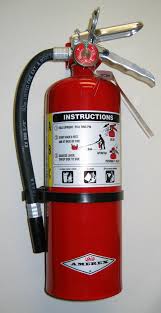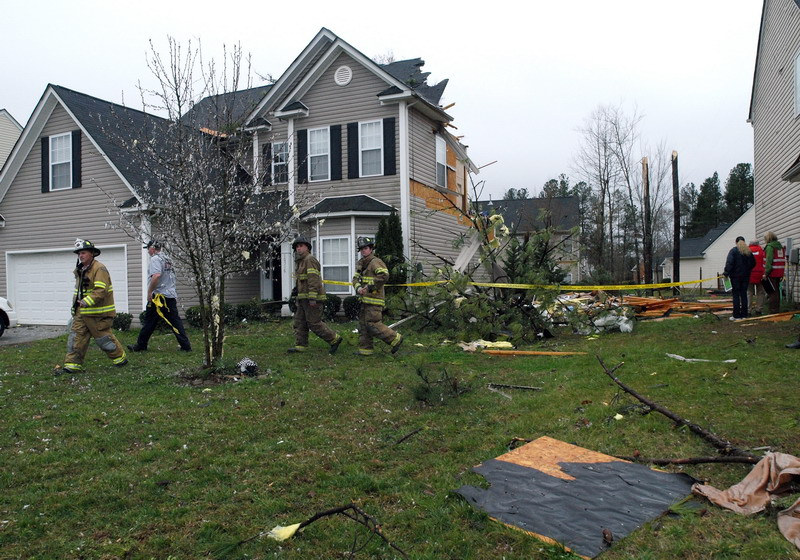People should always take all precautions they can to prevent fires from happening because of the damage they cause and the danger they present. However, accidents do happen. If a small fire breaks out, it can be contained quickly if you take the necessary measures.
Fire extinguishers are effective for putting out small fires and preventing serious damage. Because of this, it is important to have fire extinguishers readily available throughout your property, but especially in areas where fires are more prone to occur, such as the kitchen.
If you are going to get a fire extinguisher, it is important that you are aware of the different classes of fires and the various types of fire extinguishers available. Each type of fire extinguisher is designed to extinguish a certain kind of fire. If you use the incorrect fire extinguisher, then it will not effectively put out the fire and could even make the situation worse.
Classes of Fires
There are five different classes of fires. Each one is classified by the fire’s source materials and requires a different approach to extinguish it.
- Class A fires: Fires fueled by paper, wood, textiles, and other similar solid materials
- Class B fires: Fires fueled by diesel, petrol, oils, alcohol, and other flammable liquids
- Class C fires: Fires fueled by motors, computers, electrical appliances, and other energized electrical equipment
- Class D fires: Fires fueled by combustible metals
- Class K fires: Fires fueled by cooking oils, such as the ones used to deep fry foods; known as class F in Europe and Australia
Classes of Fire Extinguishers
Like classes of fires, there are also different classes of fire extinguishers. Each class is suited to put out only specific types of fires. The appropriate fire extinguisher needs to be used for the correct fire to effectively combat the flames.
- Class A: Extinguishes paper, wood, and other class A fires that contain ordinary combustibles
- Class B: Extinguishes gasoline, oils, and other class B fires that contain flammable liquids
- Class C: Extinguishes electrically energized fires, such as those sourced by motors
- Class D: Extinguishes combustible metals
Some fire extinguishers are multipurpose, meaning they can put out several types of fires. For example, some are labeled with A-B-C. This means the fire extinguisher is suitable for putting out ordinary combustibles, flammable liquids, and electrical fires.
Types of Fire Extinguishers
In addition to classes of fire extinguishers, there are also different types of fire extinguishers. Not all fire extinguishers contain the same materials, so it is important to know which types are available and which ones can be used on certain fires and materials.
Water
A great option for Class A fires, water fire extinguishers come in four different types: water jet, water fog/mist, water with additives, and water spray. Regardless of its type, all water extinguishers have a red label. They work by removing the heat from the fire.
- Water jet: This extinguisher sprays a jet of water at the flames. This cools down the fire and prevents it from being reignited.
- Water fog/mist: The extinguisher uses small droplets from the fog or mist to put out a fire. The fog or mist can cover a large surface area, allowing for quicker evaporation. The quick evaporation absorbs heat faster but is ultimately a less powerful method.
- Water with additives: This extinguisher contains foaming chemicals added to the water. This rids the water of its innate surface tension, allowing the water to soak inflamed contents more effectively.
- Water spray: This extinguisher uses a fine spray of water droplets to put out a fire. Every droplet is encircled by non-conductive air.
Foam
Suitable for class A and B fires, foam extinguishers use foam to eliminate the heat element of the fire in a way similar to water extinguishers. They also separate oxygen from other components in the fire. The foam stops the fire by sealing the liquid’s surface, removing the fire’s fuel.
These extinguishers feature a cream-colored label.
Carbon Dioxide
Carbon dioxide extinguishers, which have a black label, are best suited for class C fires but can also be used on class B fires. The carbon dioxide will smother the flames, cutting off the oxygen supply.
Powder
Effective for class A, B, and C fires, powder fire extinguishers work by spraying a fine powder that suffocates the flames. Because the powder can cause breathing problems and visibility issues, it is not recommended for indoor use unless absolutely necessary.
These extinguishers have a blue label.
Wet Chemical
Identifiable by its yellow label, wet chemical extinguishers are used for class K fires. What makes this type of fire extinguisher effective on fires involving cooking oils and fats is the wet chemical’s ability to suffocate the flames and cool the cooking oil. When the chemical interacts with it, it creates a soapy solution that closes the surface and prevents re-ignition.
Fire Damage Restoration Services
Sometimes, fires are too much to handle on your own even with the proper fire extinguisher. While you want to act quickly to quell the flames, you must prioritize your safety and the safety of others. If a fire breaks out and is too much to handle, immediately evacuate and contact your local fire department to have the flames put out.
If you do not act promptly to have the fire damage cleaned and repaired after the fire is out, then the damage can become permanent. Once the fire has been extinguished, reach out to a professional fire damage restoration service to start the cleanup process.
Upon arrival to your property, professional technicians will conduct emergency pre-cleaning to prevent permanent damage. From there, further cleaning, fire restoration, and repairs are done. Lingering odors are effectively removed and resulting water damage from extinguishing the fire can also be addressed.
With professional fire damage restoration help, your home or business will be a clean and safe environment yet again.





